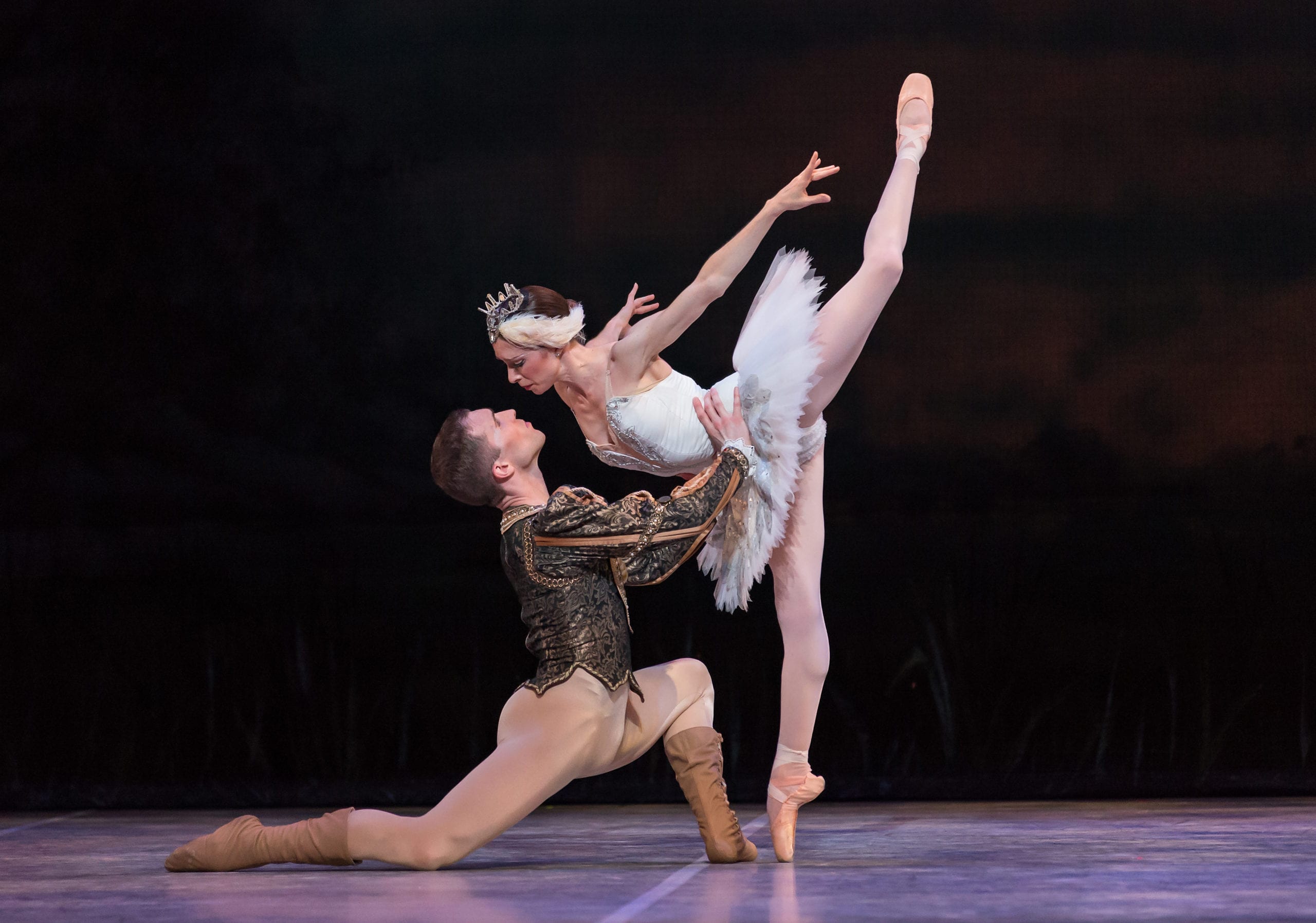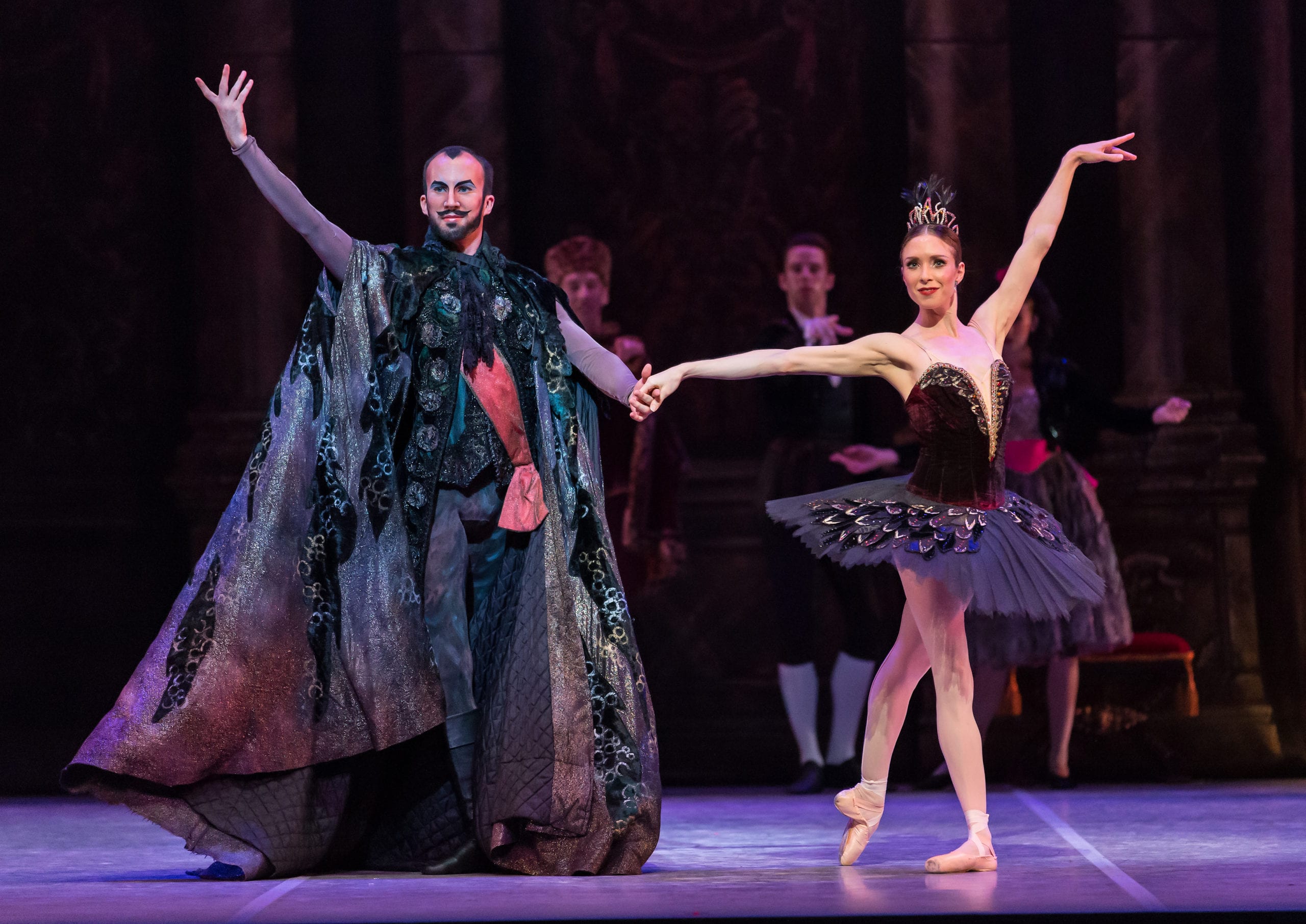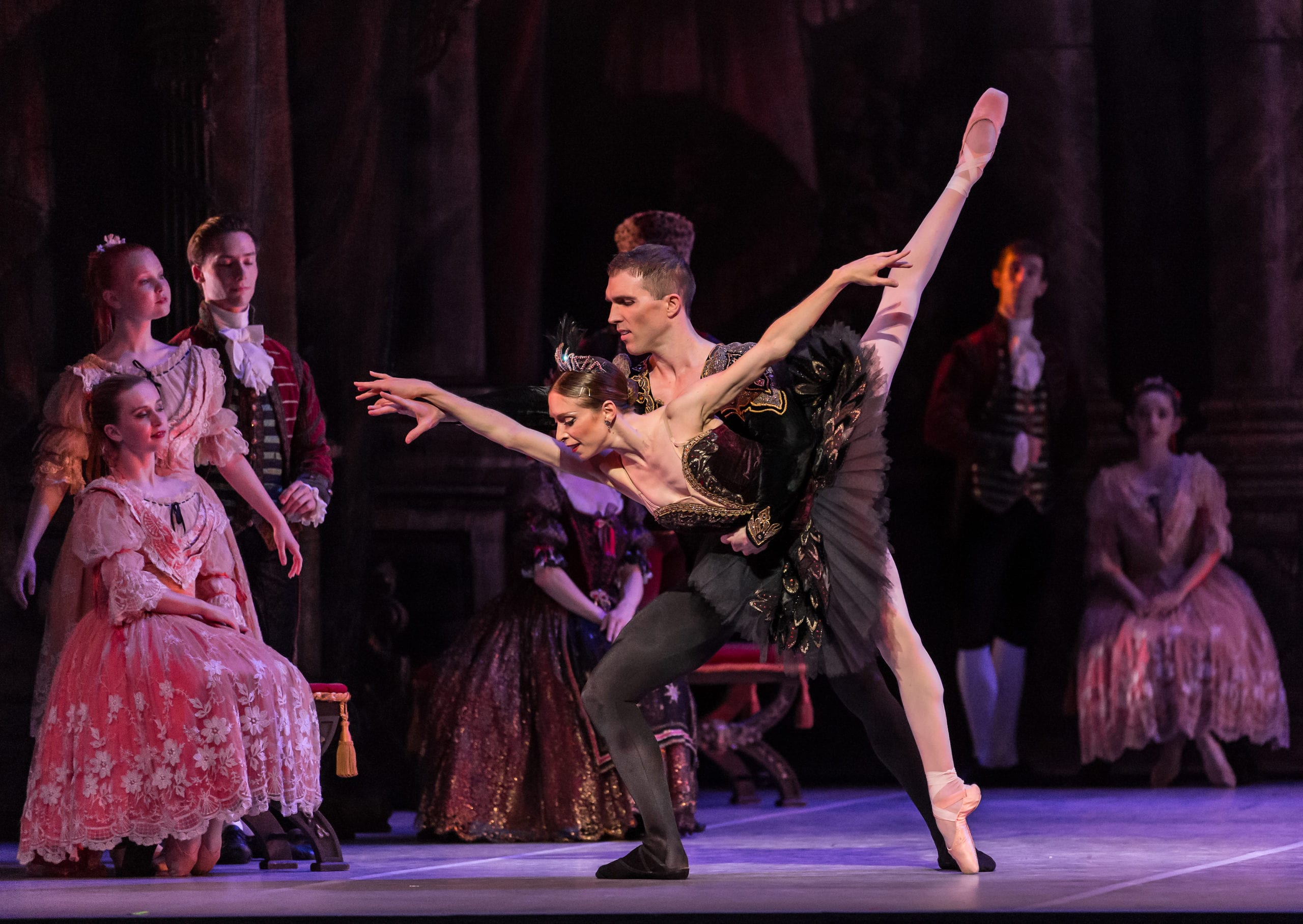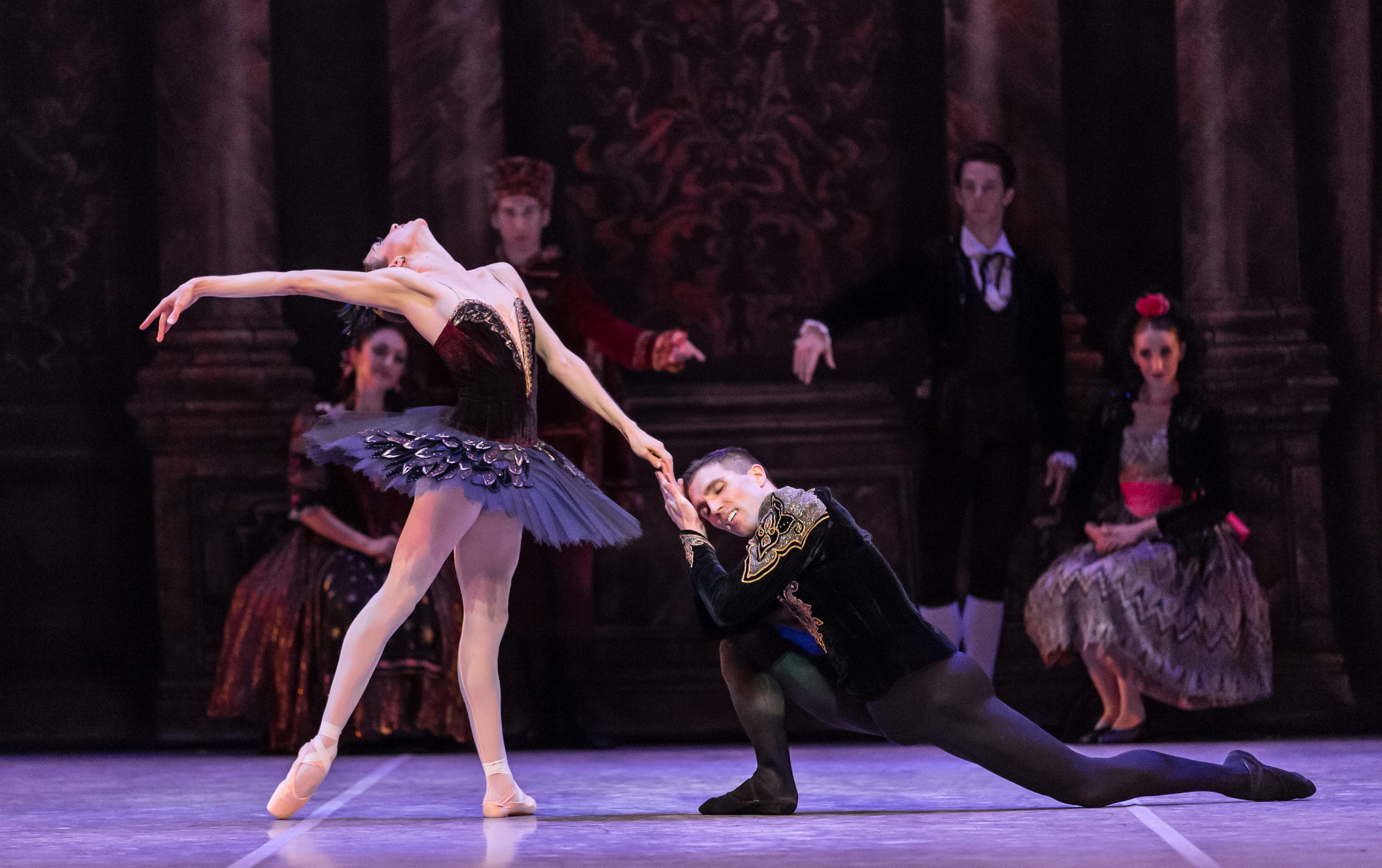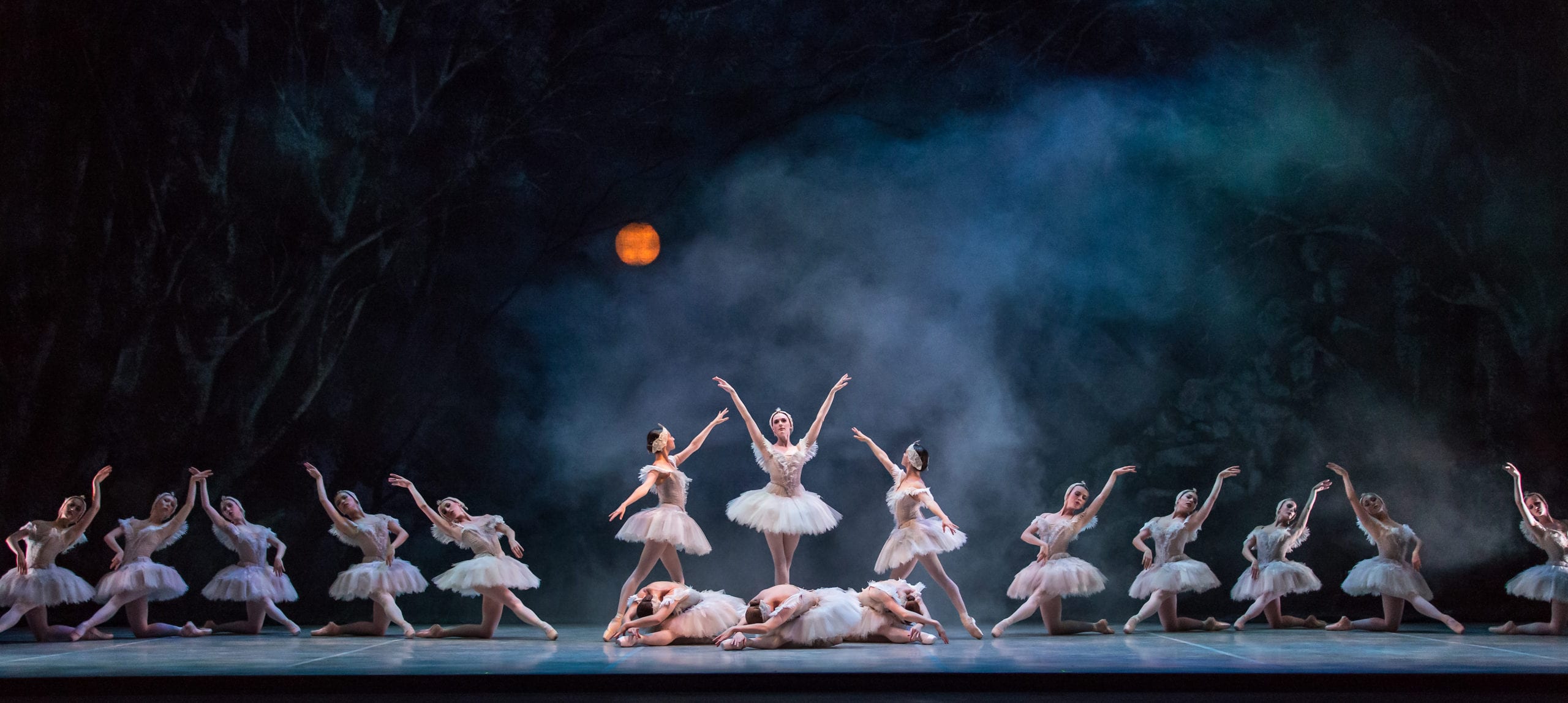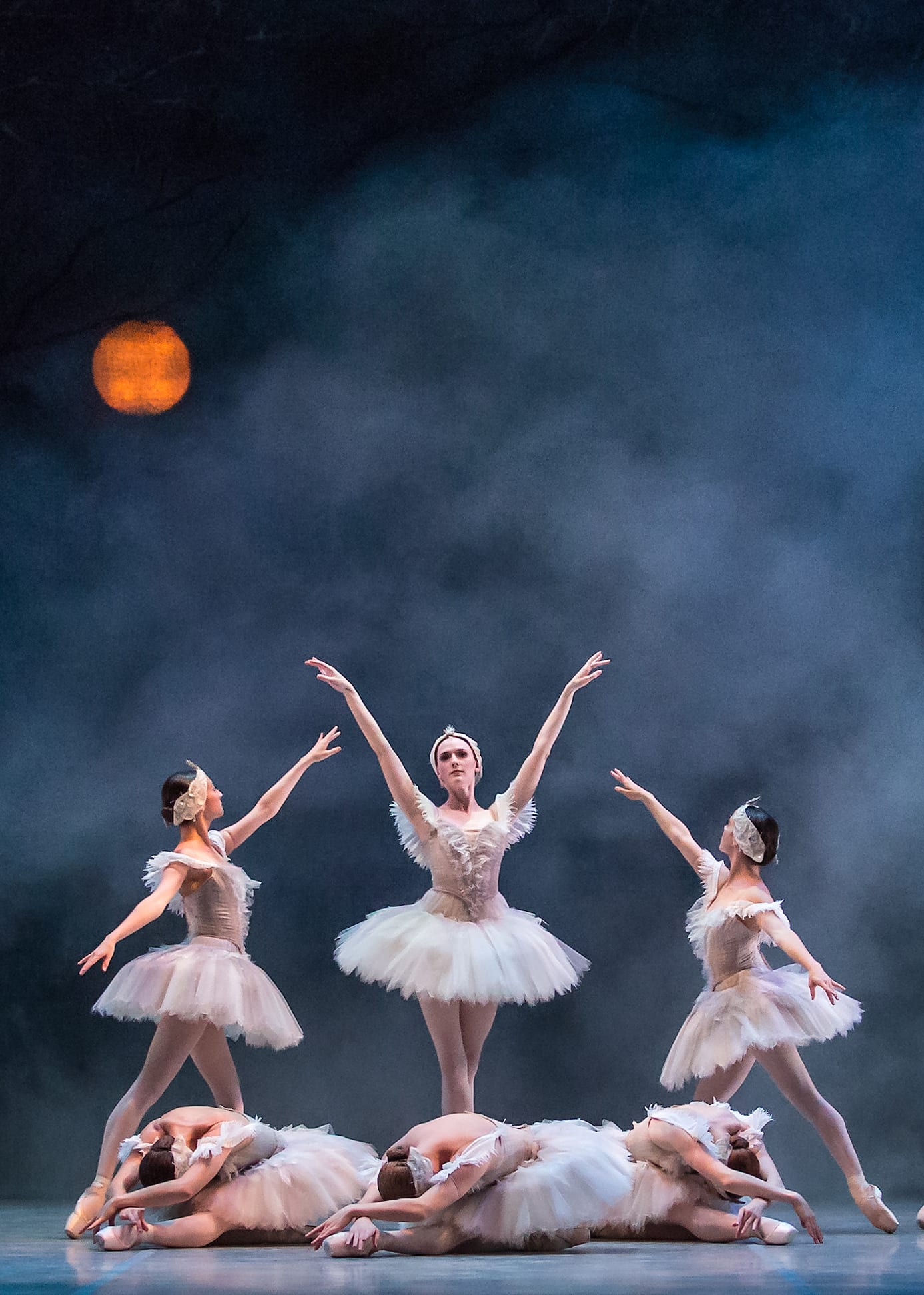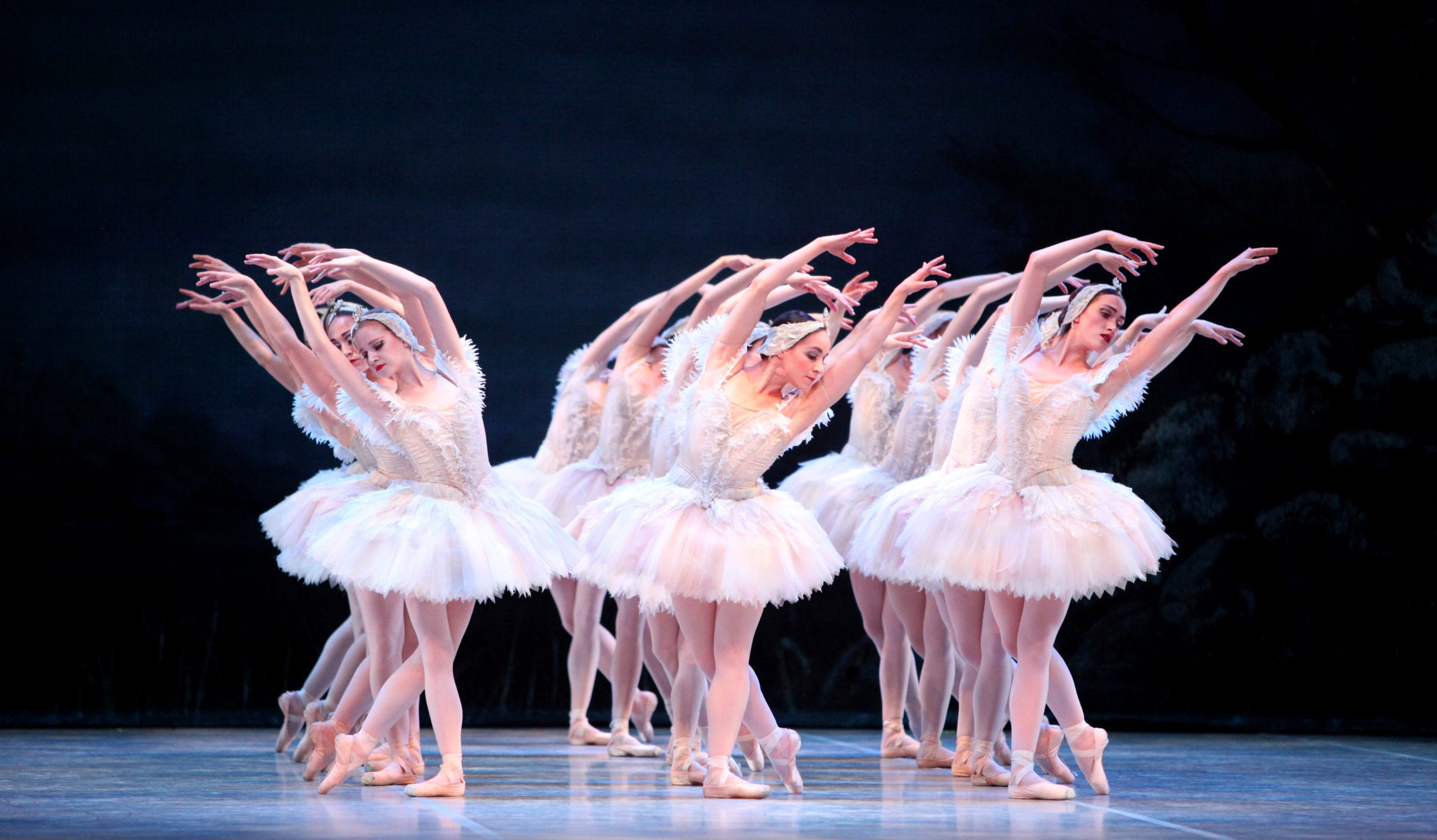
Swan Lake
One of the world’s most beautiful ballets back by popular demand.
Join us Mother’s Day weekend for the world’s best-known ballet and a romantic love triangle for the ages. A sorcerer transforms an innocent girl into a White Swan, and when a prince falls in love with her, he creates her evil twin, the Black Swan, to entice him away. A story of devotion, infatuation, heartbreak, and forgiveness, SWAN LAKE features Marius Petipa’s original choreography and breathtaking corps de ballet sequences, set to Pyotr Tchaikovsky’s sweeping score. It’s the ballet classic you must experience.
CHOREOGRAPHY: Marius Petipa
MUSIC: Pyotr Ilyich Tchaikovsky
LIVE ACCOMPANIMENT: Austin Symphony Orchestra
4 PERFORMANCES:
- Friday, May 6, 2022, at 8 p.m.
- Saturday, May 7, 2022, at 2 p.m.*
- Saturday, May 7, 2022, at 8 p.m.
- Sunday, May 8, 2022, at 2 p.m. (Mother’s Day)
Swan Lake is 2 hours, including one 20 minute intermission, and one 5 minute pause.
Military and senior 65+ discount as well as Student Rush tickets available. Visit our FAQs page for more information.
*This performance is not available in season packages but may be exchanged into or purchased at a later date.
VIDEO LIBRARY
BY PAUL MICHAEL BLOODGOOD
IMAGES BY TONY SPIELBERG
IMAGES BY ANNE MARIE BLOODGOOD
MEET THE ARTISTS
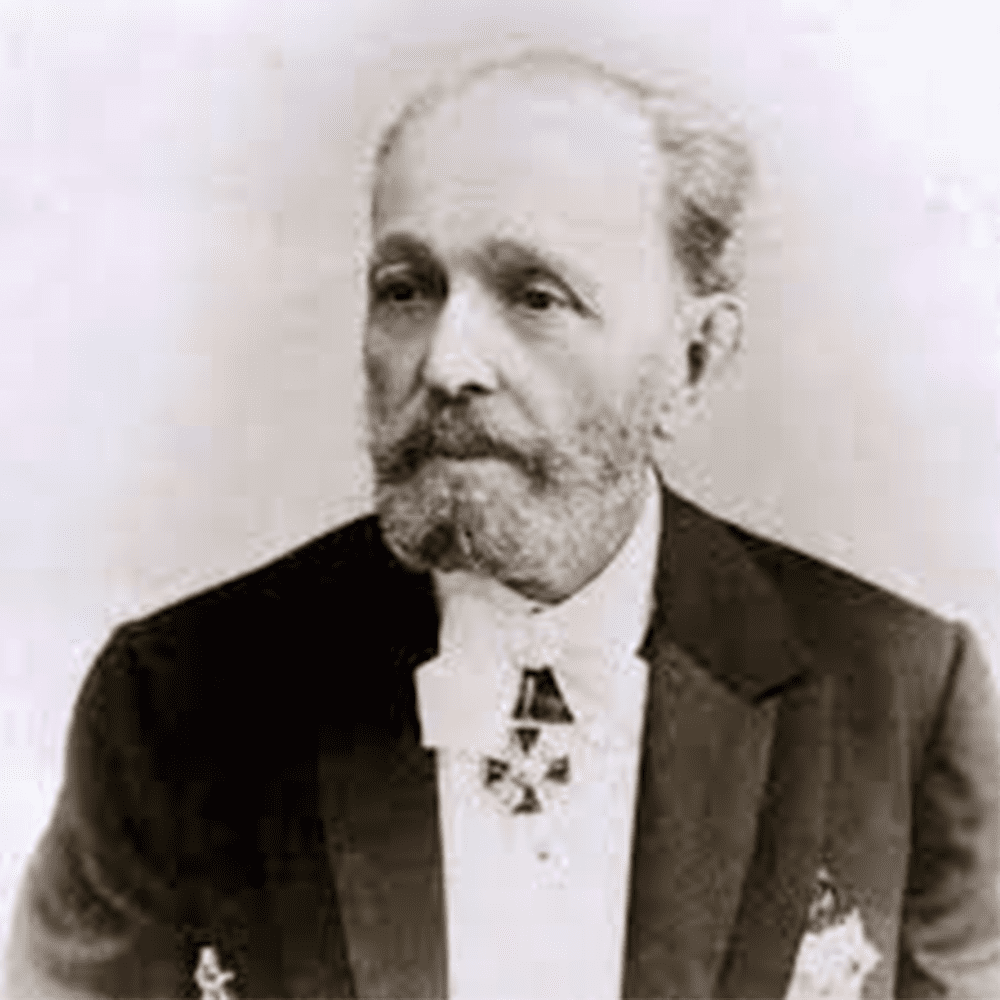
MARIUS PETIPA
Choreography
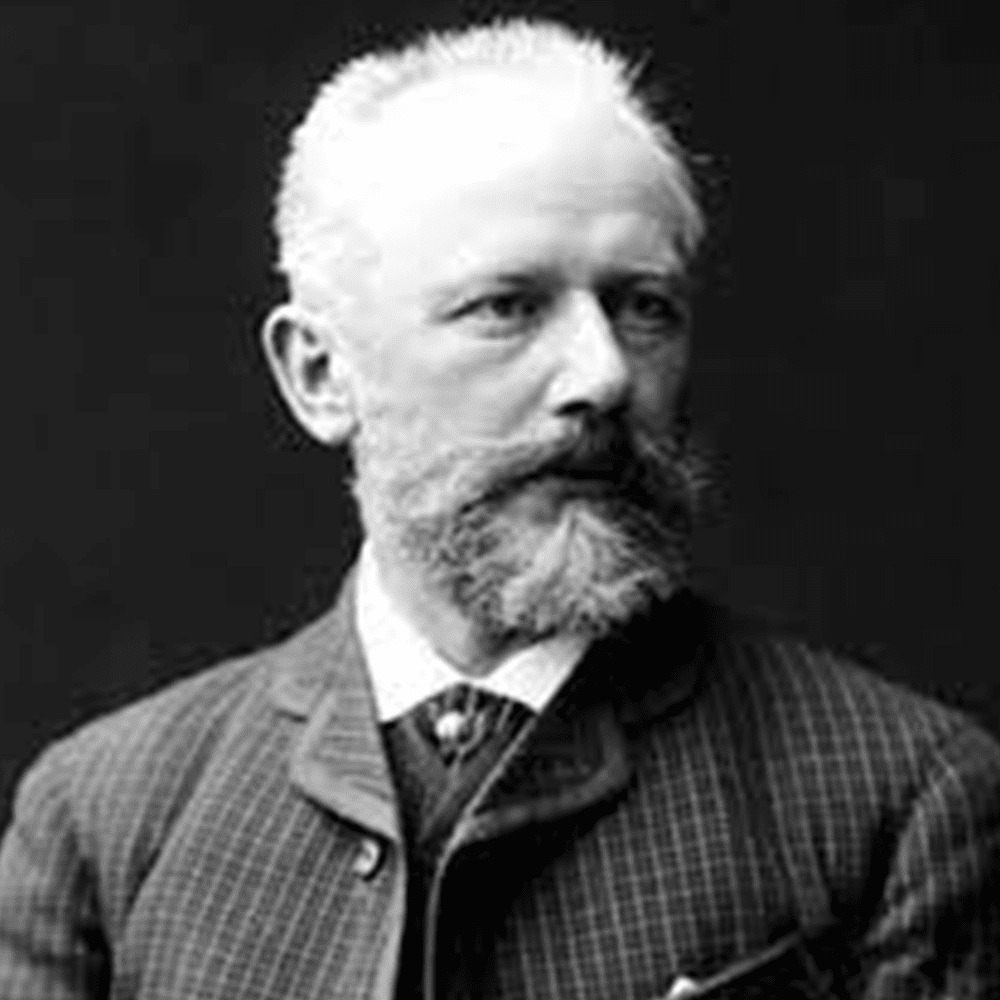
PYOTR ILYICH TCHAIKOVSKY
Music

AUSTIN SYMPHONY ORCHESTRA
Live Accompaniment
BACKGROUND INFORMATION
Marius Petipa, (born March 11, 1818, Marseille, France—died July 14, 1910, Gurzuf, Ukraine, Russian Empire), dancer and choreographer who worked for nearly 60 years at the Mariinsky Theatre in St. Petersburg and had a profound influence on modern classical Russian ballet. He directed many of the greatest artists in Russian ballet and developed ballets that retain an important position in Russian dance repertoire.
Petipa and his brother Lucien (later principal dancer at the Paris Opéra) received their early training from their father, Jean, a ballet master long active in Brussels. After Marius’ debut in Nantes, France, in 1838, he danced in Belgium, France, and the United States (he appeared in New York City in 1839) before accepting an engagement in Spain, where he gathered material for ballets later produced in Russia. He established a reputation as a talented pantomime artist and one of the outstanding dancers of his day.
Petipa made his initial appearance at the St. Petersburg Mariinsky Theatre in 1847 in Paquita and staged his first original ballet, Un Mariage sous la régence (“A Regency Marriage”), there in 1858. For his wife, the ballerina Mariya Surovshchikova, he created Le Marché des Paris (1859; “Parisian Market”; staged as Le Marché des innocents, 1861). His first outstanding success was La fille du pharaon (1862; “The Pharaoh’s Daughter”).
Later, after becoming choreographer in 1862 and chief choreographer in 1869, Petipa produced more than 60 ballets, working from carefully detailed plans that became the basis of modern classical ballet in Russia. He collaborated with Tchaikovsky on The Nutcracker (Casse Noisette, choreographed by his assistant Lev Ivanov) and The Sleeping Beauty and presented versions of Swan Lake, Raymonda, and Giselle that have been revived frequently. Among other major ballets are his Don Quixote (1869), La Bayadère (1877), and Le Corsaire (1899). After the death of his first wife, Petipa married another dancer, Lyubov Leonidovna.
Biography courtesy of britannica.com.
Pyotr Ilyich Tchaikovsky
(1840–1893)
Pyotr Ilyich Tchaikovsky is widely considered the most popular Russian composer in history. His work includes the ‘The Sleeping Beauty’ and ‘The Nutcracker.’
Who Was Tchaikovsky?
Composer Pyotr Ilyich Tchaikovsky’s work was first publicly performed in 1865. In 1868, his First Symphony was well-received. In 1874, he established himself with Piano Concerto No.1 in B-flat Minor. Tchaikovsky resigned from the Moscow Conservatory in 1878 and spent the rest of his career composing yet more prolifically. Tchaikovsky is most celebrated for his ballets, specifically Swan Lake, The Sleeping Beauty and The Nutcracker. He died in St. Petersburg on November 6, 1893.
Early Life
Russian composer Pyotr Ilyich Tchaikovsky was born on May 7, 1840, in Kamsko-Votkinsk, Vyatka, Russia. He was the second eldest of his parents’ six surviving offspring. Tchaikovsky’s father, Ilya, worked as a mine inspector and metal works manager.
When he was just five years old, Tchaikovsky began taking piano lessons. Although he displayed an early passion for music, his parents hoped that he would grow up to work in the civil service. At the age of 10, Tchaikovsky began attending the Imperial School of Jurisprudence, a boarding school in St. Petersburg. His mother, Alexandra, died of cholera in 1854, when he was 14 years old. In 1859, Tchaikovsky honored his parents’ wishes by taking up a bureau clerk post with the Ministry of Justice — a post he would hold for four years, during which time he became increasingly fascinated with music.
When he was 21, Tchaikovsky decided to take music lessons at the Russian Musical Society. A few months later, he enrolled at the newly founded St. Petersburg Conservatory, becoming one of the school’s first composition students. In addition to learning while at the conservatory, Tchaikovsky gave private lessons to other students. In 1863, he moved to Moscow, where he became a professor of harmony at the Moscow Conservatory.
Tchaikovsky’s Compositions
Operas
Pyotr Tchaikovsky’s work was first publicly performed in 1865, with Johann Strauss the Younger conducting Tchaikovsky’s Characteristic Dances at a Pavlovsk concert. In 1868, Tchaikovsky’s First Symphony was well-received when it was publicly performed in Moscow. The following year, his first opera, The Voyevoda, made its way to the stage — with little fanfare.
After scrapping The Voyevoda, Tchaikovsky repurposed some of its material to compose his next opera, Oprichnik, which achieved some acclaim when it was performed at the Maryinsky in St. Petersburg in 1874. By this time, Tchaikovsky had also earned praise for his Second Symphony. Also in 1874, his opera, Vakula the Smith, received harsh critical reviews, yet Tchaikovsky still managed to establish himself as a talented composer of instrumental pieces with his Piano Concerto No.1 in B-flat Minor.
From ‘Swan Lake’ to ‘The Nutcracker’ Ballets
Acclaim came readily for Tchaikovsky in 1875, with his composition Symphony No. 3 in D Major. At the end of that year, the composer embarked on a tour of Europe. In 1876, he completed the ballet Swan Lake as well as the fantasy Francesca da Rimini. While the former has come to be one of the most frequently performed ballets of all time, Tchaikovsky again endured the ire of critics, who at its premiere panned it as too complex and too “noisy.”
Tchaikovsky resigned from the Moscow Conservatory in 1878 to focus his efforts entirely on composing. As a result, he spent the remainder of his career composing more prolifically than ever. His collective body of work constitutes 169 pieces, including symphonies, operas, ballets, concertos, cantatas and songs. Among his most famed late works are the ballets The Sleeping Beauty (1890) and The Nutcracker (1892).
Personal Life
Struggling with societal pressures to repress his homosexuality, in 1877, Tchaikovsky married a young music student named Antonina Milyukova. The marriage was a catastrophe, with Tchaikovsky abandoning his wife within weeks of the wedding. During a nervous breakdown, he unsuccessfully attempted to commit suicide, and eventually fled abroad.
Tchaikovsky could afford to resign from the Moscow Conservatory in 1878, thanks to the patronage of a wealthy widow named Nadezhda von Meck. She provided him with a monthly allowance until 1890; oddly, their arrangement stipulated that they would never meet.
Death
Tchaikovsky died in St. Petersburg on November 6, 1893. While the cause of his death was officially declared as cholera, some of his biographers believe that he committed suicide after the humiliation of a sex scandal trial. However, only oral (no written) documentation exists to support this theory.
Biography courtesy of biography.com.
About Austin Symphony Orchestra
The mission of the Austin Symphony Orchestra Society, Inc. is to enhance the cultural quality of life for the adults and young people of Austin and Central Texas by providing excellence in music performance and educational programming.”
Founded in 1911, the Austin Symphony Orchestra is Austin’s oldest performing arts group. The ASO offers a complete season of musical and educational programming. Masterworks concerts include a series of eight concert pairs running monthly September through May in the state-of-the-art Joe R. & Teresa Lozano Long Center for the Performing Arts. Our season also features the Sarah & Ernest Butler Pops Series: October & February Pops at the Long Center and December & June Pops at Palmer Events Center. Programming for the entire family includes the Halloween Children’s Concert, and the Christmas in the Community, as well as the popular James C. Armstrong Youth Educations Programs, which include Children’s Day Art Park, Young People’s Concerts, High School Concert Tour and a variety of other school programs.
Symphony Square at 11th and Red River is home to the ASO’s administrative offices. This complex of four historic Austin buildings (two of which are owned by the ASO and Waterloo Greenway) is also home to the Women’s Symphony League of Austin.
Please Note: As of January, 2021 our new temporary administration office is located at 1806 Rio Grande St., Austin, TX 78701.
Music Director, Maestro Peter Bay: https://austinsymphony.org/about/conductor/
Austin Symphony Orchestra Musicians: https://austinsymphony.org/about/musicians/
Swan Lake Cast
Odette/Odile – Elise Pekarek* / Katherine Deuitch**
Siegfried – Morgan Stillman* / James Fuller**
Von Rothbart – Edward Carr
Benno – Max Azaro
Hunters – Arnaldo Hernandez, Ahmad Hill, Michael Jastrzebski, Leighton Taylor
Big Swans – Alyssa Manguiat, Dianetzy Rojas
Little Swans – Courtney Holland, Isabella Phillips Lynch, Grace Morton, Chelsea Marie Renner
Swans – Daniela Bennetti, Ellis Broderick, Lexi Eicher, Vivien Farrell, Elizabeth Kanning, Lucia Lorenzo, Elizabeth-Jane Moller, Alexandra Owens, Isabelle Ramey, Isabella Salas
Queen – Aara Krumpe
Master of Ceremonies – Julius Taiber
Courtiers – Sophia Crane, Daniel Estrada, Arnaldo Hernandez, Ahmad Hill, Ashley Krystkowiak, Priscilla Pope, Natasha Snogren
Fiancées – Lexi Eicher, Vivien Farrell, Courtney Holland* / Grace Morton**, Alyssa Manguiat, Isabelle Ramey, Dianetzy Rojas
Fandango – Chelsea Marie Renner and Max Azaro
Czardas – Elizabeth-Jane Moller and Preston Andrew Patterson, Daniela Bennetti, Ellis Broderick, Lucia Lorenzo, Michael Jastrzebski, Paul Martin, Leighton Taylor
Neapolitan – Isabella Phillips Lynch and Ian J. Bethany
*Friday evening & Saturday matinee **Saturday evening & Sunday matinee
Known for his innovative and collaborative choreographic projects, Stephen Mills has works in the repertoires of dance companies across the United States and around the world.
His international career began in 1998 after being chosen Prix d’Auteur at les Rencontres Chorégraphiques Internationales de Seine-Saint-Denis in Paris. In his inaugural season as Artistic Director of Ballet Austin in 2000, Mills attracted national attention with Hamlet, hailed by Dance Magazine as “…sleek and sophisticated.”
Mills’ works showcased at The Kennedy Center include A Midsummer Night’s Dream, The Taming of the Shrew, and performances at the Ballet Across America Festival in collaboration with The Suzanne Farrell Ballet.
In 2005 Mills developed a community-wide human rights collaborative dialogue culminating in his signature work Light/The Holocaust & Humanity Project for which he received the Audrey and Raymond Maislin Humanitarian Award from The Anti-Defamation League. Mills contributed a podcast about Light to the Voices on Anti-Semitism series at The United States Holocaust Memorial Museum and was invited to speak about the work at The United Nations in 2014. Light has been performed in five U.S. cities, in three cities in Israel, and was recently featured in an Emmy Award-winning PBS documentary, Sharing Light.
THANK YOU TO OUR SPONSORS

Production Underwriter




INDIVIDUAL PRODUCTION SPONSORS









GOVERNMENT FUNDING SPONSORS



Supported in part by awards from the Cultural Arts Division of the City of Austin Economic Development Department, the Texas Commission on the Arts, and the National Endowment for the Arts.


